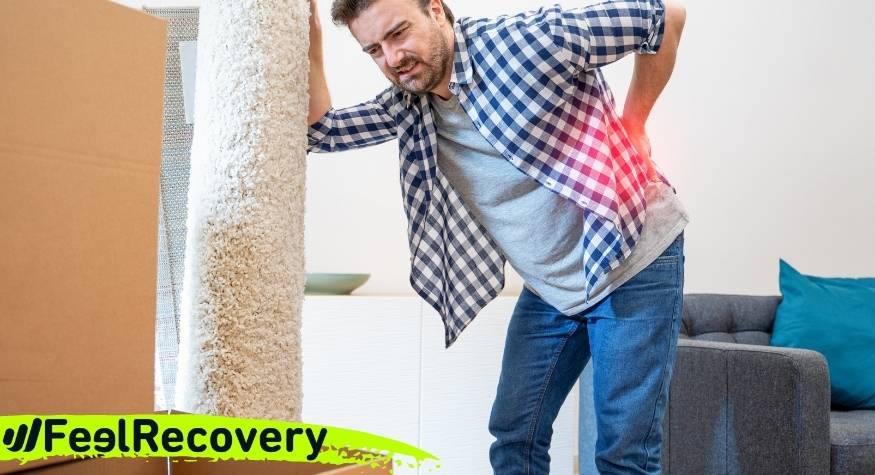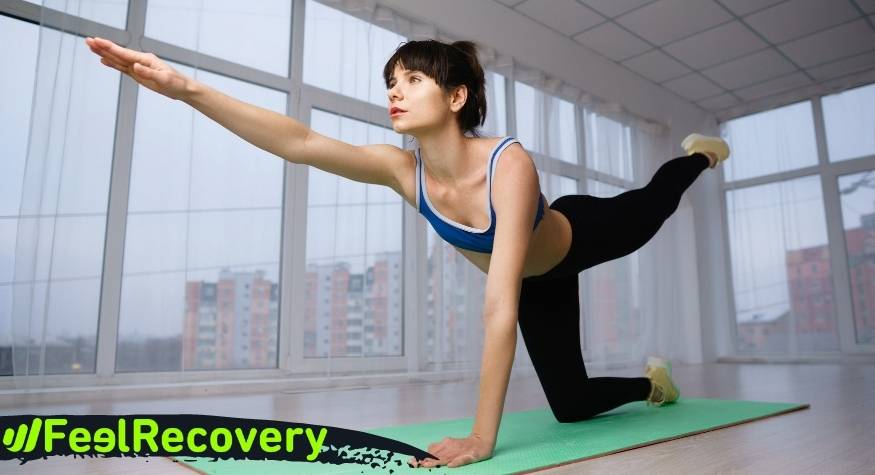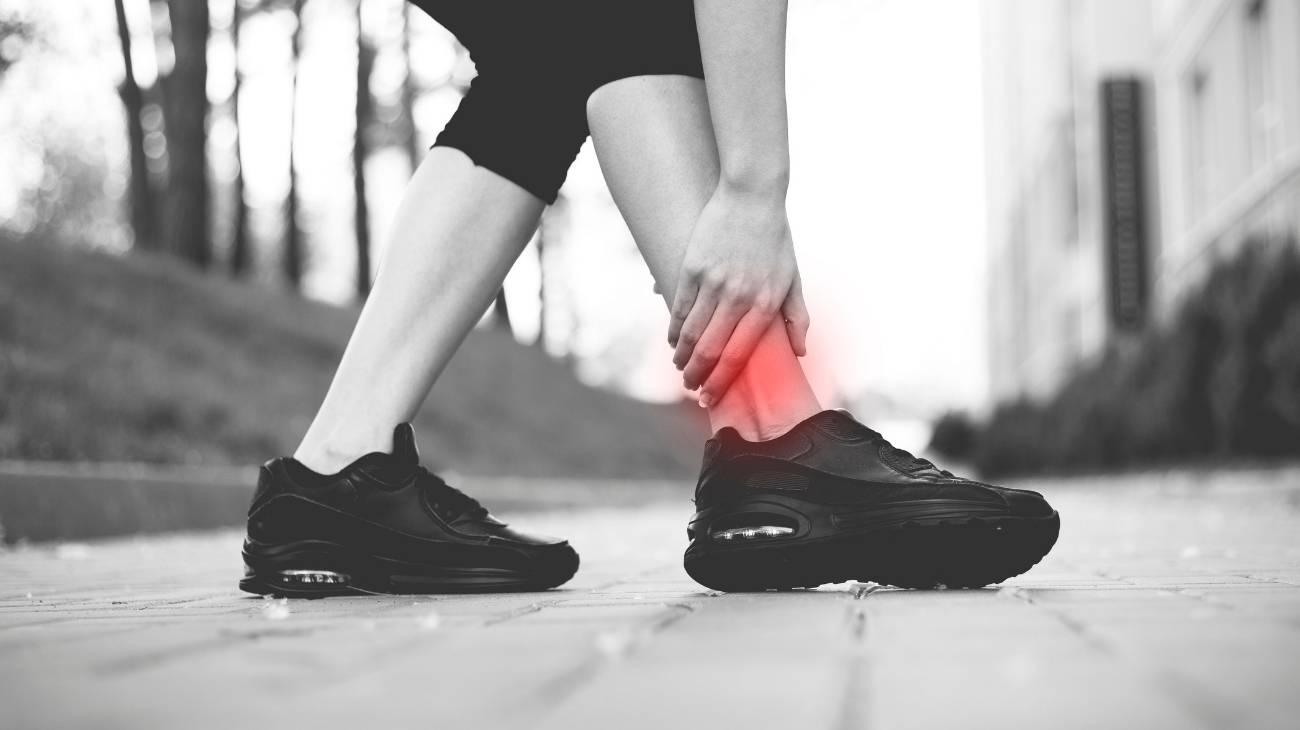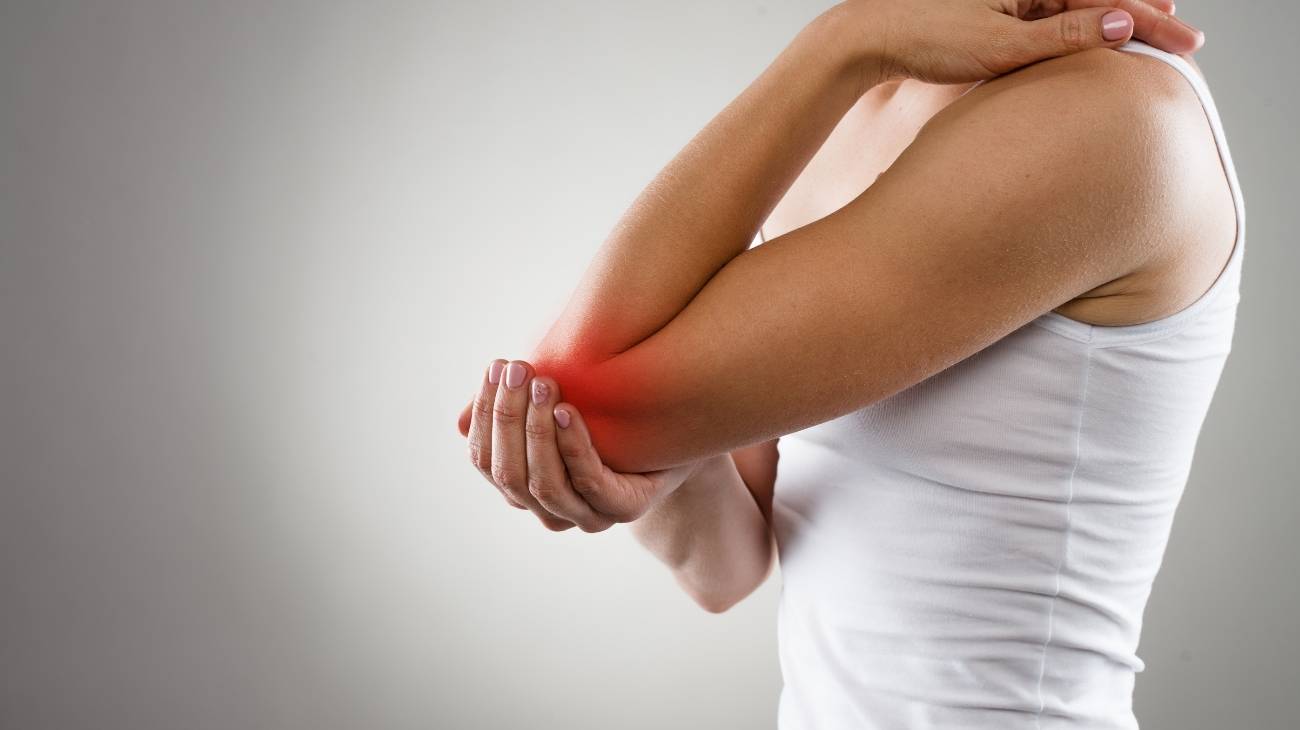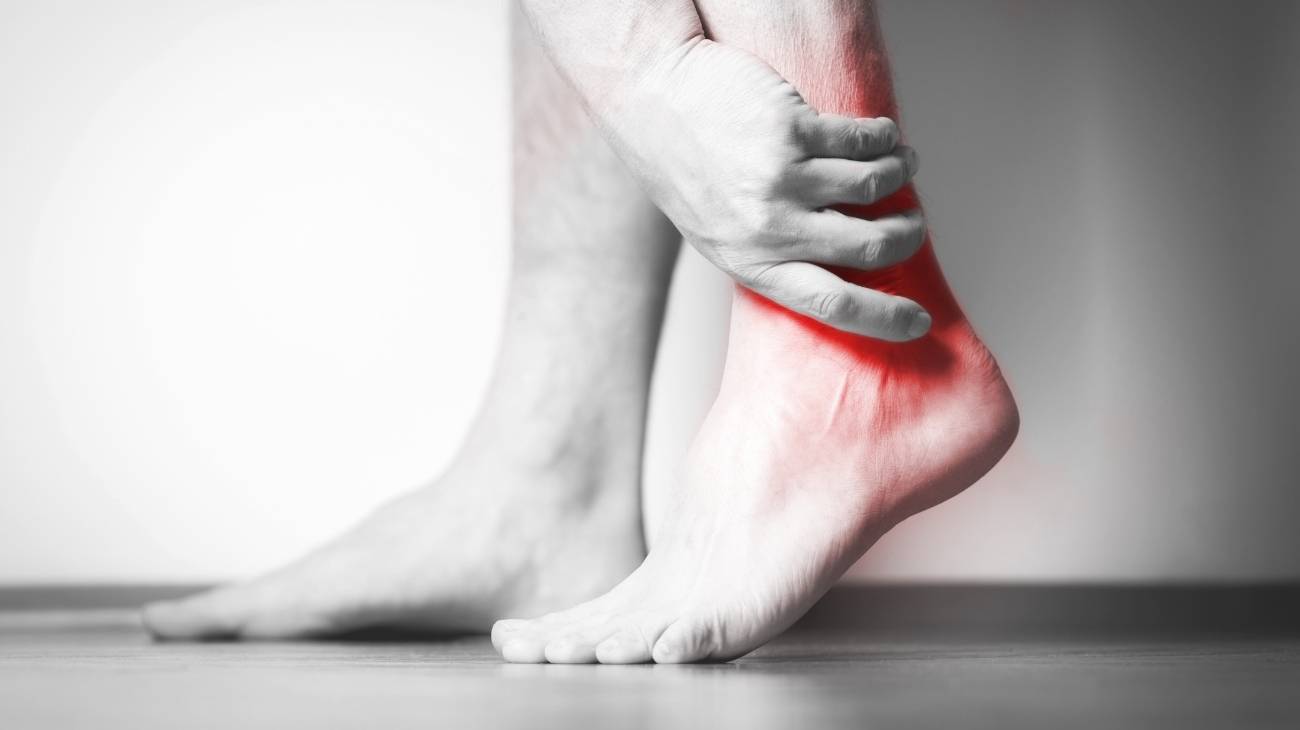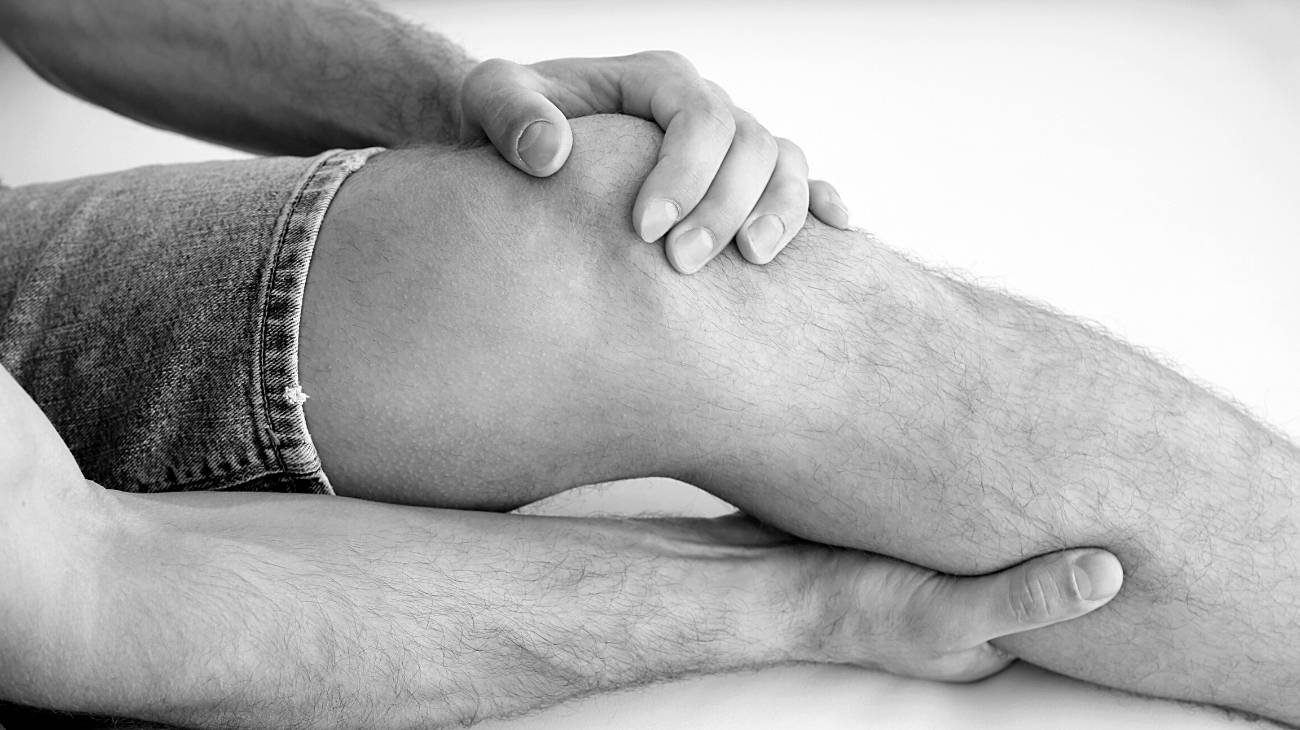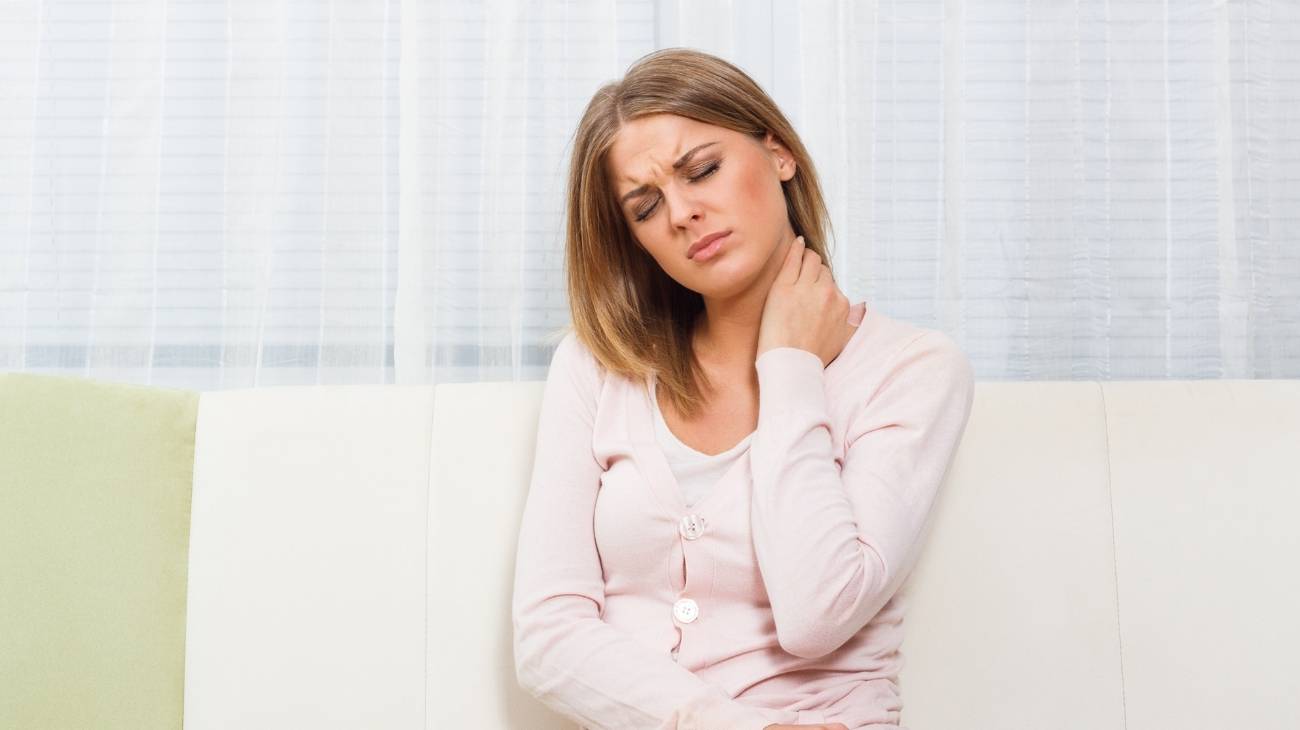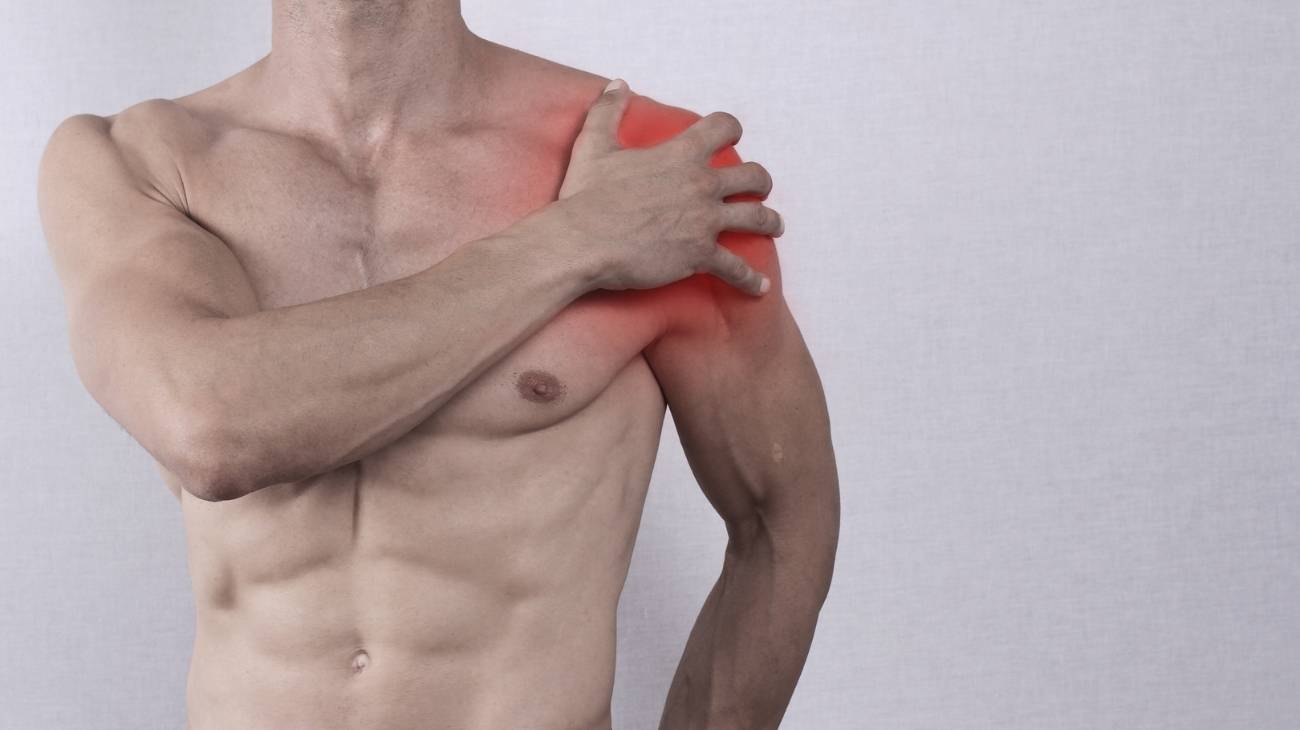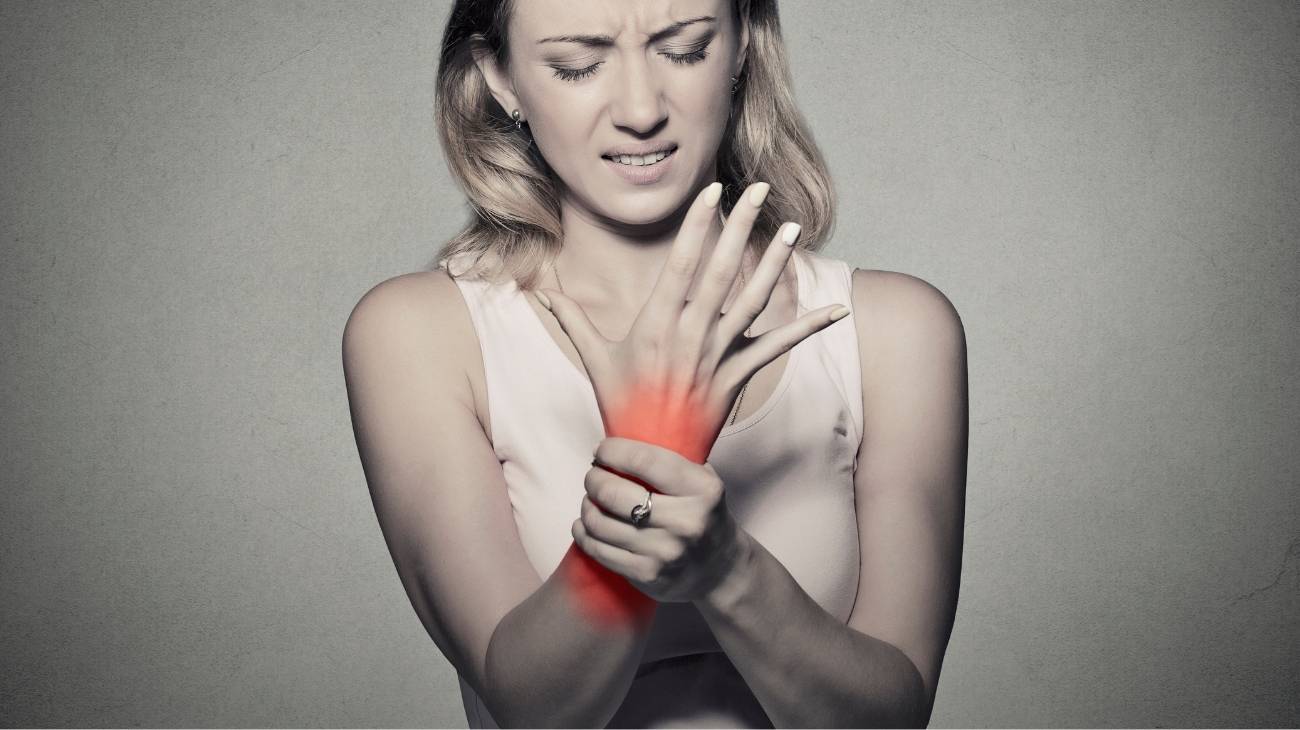- What is a back sprain or dislocation?
- What are the causes and risk factors for back sprain?
- Best products for back sprain
- Main symptoms that warn us of a back dislocation
- What treatments are available to improve the symptoms of a back sprain?
- What methods of prevention for back sprains and dislocations are most effective?
The back is composed of bones, muscles, ligaments and other tissues that extend from the neck to the pelvis. Consequently, if a tough, fibrous tissue that connects the muscles to the bones and joints, i.e. the ligaments, suffer a contusion, a back sprain or dislocation occurs.
In general, the lower back is the most common area where such injuries occur. Given its importance, it is essential to know what it consists of, what causes it, what symptoms it provokes, how it should be treated and how the pathology can be prevented.
What is a back sprain or dislocation?
One of the main injuries that are generated in the back of the human body, or back, is the lumbar sprain. This is a condition caused by the excessive stretching or tearing of the ligaments that are located along this region. This means that it is a strain that affects the joint between two bones that form a joint.
In case the injury reaches a higher level of severity and as a consequence, the ligamentous portion stops holding the bones in their normal position, thus, producing the separation of these; the injury is diagnosed as a back dislocation.
Therefore, the main difference between a sprain and dislocation in the lumbar area is that the first pathology does not affect the position of the bones, while dislocation reports the separation of these bones and is considered more acute.
On the other hand, if the vertebral dislocation becomes complicated or persists over time, the symptoms it triggers will worsen the patient's quality of life, even causing damage to the nerves, blood vessels or spinal cord around the joint that was dislocated. Considering that, if the cervical dislocation compresses the spinal cord, it will cause neurological or vascular lesions that, in many cases, will even lead to the death of the affected person.
What are the causes and risk factors for back sprain?
Specifically, the reason that produces a back sprain is the fact of forcing the maximum limit of movement of the joint which, as a consequence, generates the injury or deterioration of the ligaments that are in charge of supporting the joint.
The most important of these are listed below:
- Performing sudden or excessive movements that exceed the joint's acceptable range of motion.
- Experiencing a blow, trauma or fall that directly affects the lumbar region of the body.
- Suffering a road traffic accident in which extreme movements are combined with external forces and produce whiplash syndrome (a condition in the neck section).
- Playing high-impact or high-risk sports: Or doing any activity that promotes the possibility of trauma to the spine.
- Lifting excessive weights while twisting your body or having an incorrect posture.
- Another common reason for back sprain is poor physical condition or obesity.
- If an individual has more flexible ligaments than usual due to a hereditary attribute, he or she is more prone to developing back sprains or dislocations.
- Over time, poor postural habits tend to trigger spinal injuries such as these sprains.
- A risk factor for sprains is a propensity to fall. This means that if the patient has other diseases (spinal or neurological) that predispose them to falls, their chances of getting a sprain or vertebral dislocation increase.
- Sometimes stressful situations that last for a prolonged period of time also cause sprains to develop in the back of the body.
Best products for back sprain
Bestseller
-
Microwave Wheat Bag for Back Pain Relief (Extra Large) (Hearts)
£24,95 -
Microwave Wheat Bag for Back Pain Relief (Extra Large) (Oxford)
£24,95 -
Microwave Wheat Bag for Back Pain Relief (Extra Large) (Sport)
£24,95 -
Microwave Wheat Bag for Neck & Shoulder Pain Relief (Hearts)
£24,95 -
Microwave Wheat Bag for Neck & Shoulder Pain Relief (Oxford)
£24,95 -
Microwave Wheat Bag for Neck & Shoulder Pain Relief (Sport)
£24,95 -
Microwaveable Wheat Bag for Pain Relief (Hearts)
£20,95 -
Microwaveable Wheat Bag for Pain Relief (Oxford)
£20,95 -
Microwaveable Wheat Bag for Pain Relief (Sport)
£20,95 -
Wheat Bag for Microwave Classic Bottle Shaped (Hearts)
£20,95 -
Wheat Bag for Microwave Classic Bottle Shaped (Oxford)
£20,95 -
Wheat Bag for Microwave Classic Bottle Shaped (Sport)
£20,95
-
Back Support Belt (Black)
£39,95 -
Back Support Belt (Green)
£39,95 -
Back Support Belt (Pink)
£39,95 -
Ice Massage Roller Ball (Black)
£34,95 -
Ice Massage Roller Ball (Green)
£34,95 -
Ice Massage Roller Ball (Pink)
£34,95 -
Sacroiliac Support Belt (Black)
£24,95 -
Sacroiliac Support Belt (Green)
£24,95 -
Sacroiliac Support Belt (Pink)
£24,95 -
Soft Density Foam Roller for Recovery (Black)
£34,95 -
Soft Density Foam Roller for Recovery (Green)
£34,95 -
Soft Density Foam Roller for Recovery (Pink)
£34,95
Main symptoms that warn us of a back dislocation
To be able to recognise a back sprain or dislocation and distinguish this pathology from other similar ones, first of all, it is important to assess the patient's symptoms.
For this reason, here we highlight the main symptoms that warn of this condition:
- Pain in the affected area: This may increase depending on the severity of the injury.
- Inflammation or swelling: in the region where the contusion occurred.
- Bruising or discolouration of the skin on the back of the body.
- Alteration of sensibility and the functions it is supposed to perform: As well as, disturbance to adjacent nerve structures.
- Temporary paralysis due to the discomfort that accumulates in the area.
- Great difficulty in walking or standing up right.
- Warmth, burning or tingling sensation due to joint involvement.
- Occasionally, muscle spasms or cramps may occur.
Signs and symptoms may appear suddenly or some time after the trauma. Moreover, these vary depending on different factors that circumscribe the sprain or dislocation in the vertebral area, such as:
- The part of the spine affected
- Inflammation
- Compression of adjacent nerve or vascular structures.
- Activation of pain transmission
What treatments are available to improve the symptoms of a back sprain?
Originally, patients with a back sprain had to undergo complete rest and total immobilisation for a period of time, so that the damaged ligament would repair itself and could not be re-injured due to abnormal movement.
Instead of resorting to total rest, it is advisable to remedy this kind of injury with other complementary therapies, healthy habits, nutritional supplements, physiotherapy and other medically indicated therapies in order to attenuate the symptomatological picture characteristic of a lumbar sprain.
Here we list what procedures are involved and how they are carried out:
Alternative and complementary therapies
Nowadays, various alternative therapeutic techniques are known to soothe sprains in different parts of the body. For this reason, the following practices are effective in relieving a sprained or dislocated back:
- Heat and cold therapy: This is based on a treatment that uses the properties of heat and cold to treat a sprain. Naturally, cold relieves pain, produces a local anaesthetic effect and helps to decrease blood flow to prevent further inflammation. Heat, on the other hand, is recommended to soothe chronic pain and also stimulates blood flow to heal the injured area. Both are usually applied alternately for a specific time interval for several sessions per day. This is formulated by the medical specialist, depending on the affected area and its severity.
- Compression therapy: The aim of this treatment is to dilate the capillary vessels, without breaking their walls, so that the blood flows correctly through the affected area. This will help the metabolites to be exchanged with the fibres that have residues so that inflammation and pain can be reduced. Special compression garments that fit the patient's lower back are usually used, and in some cases this therapy is combined with complete rest to increase the benefits.
- Massage therapy: For this type of back injury, massage therapy is also recommended to help increase blood flow to the lower back, reduce inflammation and relax the muscles in the lower back that have contracted from the impact. Gradually, the patient will improve and regain his or her normal range of motion. However, to avoid worsening the condition, it is essential to visit a trained massage therapist who will perform the techniques correctly to speed up the healing process.
- Acupressure therapy: It is possible to apply this Chinese medicine by massaging specific points on the body using the fingertips and palms of the practitioner's hands. The aim of this technique is for the patient to find a mental balance in order to reduce stress and allow total relaxation of the musculature, especially in the affected area.
- Natural remedies using plants: Inherent medicine is also suitable to lessen the various discomforts that appear along with a sprained back, especially when combating the pain and inflammation caused by this condition. Therefore, to accelerate the rehabilitation process, it is efficient to apply natural remedies that promote the healing of a patient with this pathology. In the case of back pain and discomfort, it is advisable to: drink horse chestnut infusions, place rosemary mixed with vinegar on the injured area, drink sage tea, ingest hypericum infusions, rub arnica oil, drink ginger extract and do aromatherapy with lavender.
- Healthy lifestyle habits: Implementing certain healthy and balanced habits in your daily life can also help to soothe and, especially, prevent the signs of a lumbar sprain or dislocation. Because, thanks to this, the organism in general will be able to obstruct the development of numerous pathologies. In this sense, we recommend practising the following habits to have a healthier life: Do moderate physical activities, do stretching exercises correctly, have a diet rich in vitamins and minerals, avoid being overweight or obese, wear comfortable shoes that adapt to your feet, do not smoke or drink alcohol excessively, keep a good muscle tone and maintain a correct posture.
Nutritional supplements
Nutritional supplements are foods or products that contain good doses of vitamins, minerals, proteins, herbs, amino acids and enzymes that promote the functioning of the body so that it can carry out all its processes in the most effective way possible.
Indeed, in order to speed up the recovery process from a back sprain, the consumption of certain food supplements that promote joint care and strengthen ligaments, joints and muscles is prescribed. They also have the necessary properties to relieve pain and reduce inflammatory processes.
Best nutritional supplements to soothe a sprain or dislocation in the lumbar area:
- Collagen: It is a protein that is distinguished by its influence in the repair of ligaments and tendons that suffer damage after a contusion, mainly. Consequently, as it is a component that has a large presence in the connective tissues of the body, it helps to promote healing of sprains that are triggered in any area of the body. In addition, it promotes joint health, optimises joint mobility and flexibility, reduces pain and reduces inflammation. To consume collagen naturally, the following foods are recommended: milk, cheese, meat, eggs, oily fish, avocado, celery, onion, strawberries, cherries and gelatine.
- Hyaluronicacid : In many cases, by means of transfusions, doctors use hyaluronic acid to treat joint pain and stiffness after an injury that directly affects the joints. Consequently, to improve the functional status of the back of the body that was impacted during a sprain, patients are advised to inherently consume hyaluronic acid. Taking into account that the main food sources of this substance are: beef, veal, lamb, turkey, duck, whole grains, brown rice, yeast, red and green peppers, starchy root vegetables, beans, peanuts, parsley, coriander, etc.
- Calcium: This refers to an essential mineral in the body which, in addition to promoting bone vitality, also helps the body to stimulate the reconstruction of damaged ligamentous tissue following a pathology of this type. Therefore, to assist the healing of sprains in the lumbar region, it is also appropriate to eat foods containing calcium, such as: dairy products (cheese, milk and yoghurt), nuts (hazelnuts, almonds and walnuts), salmon, sardines, red beans, broccoli, kale, currants, figs, apricots, oranges, etc.
- Vitamin D: By default, this substance has the capacity to improve the joints and in addition to this, it contributes to the synthesis of proteoglycans, as well as it also has the function of capturing the calcium necessary for the human body to operate efficiently around the bone system. Therefore, to strengthen the back so that it can recover as quickly as possible after a sprain, it is also advisable to avoid vitamin D deficiencies. To do this, you can eat: cheese, egg yolk, sardines, salmon, tuna, others, trout, mackerel, beef liver and mushrooms (in proportional quantities).
- Omega 3: This is a fatty acid that is basically essential for strengthening neurons, maintaining heart health and protecting people from stroke. But beyond that, omega 3 has been shown to help curb joint pain and stiffness (due to its anti-inflammatory effects), as well as reduce nerve discomfort in the spine. Consequently, it is suggested to consume omega 3 while the sprained back is healing and for this, you should know its main natural sources: fish (tuna, sardines, salmon and mackerel), plant or vegetable oils (flaxseed, canola, soy, etc.), milk, yoghurt, eggs, nuts and seeds, oats, etc.
- Vitamin E: It is considered to be an essential vitamin supplement for ligaments and tendons to reveal optimal functioning throughout the human body. It is also capable of producing an anti-inflammatory effect by releasing cytokines and regulating skin volume by gathering tissue repair cells. It is therefore also a vitamin suitable for treating back sprains in conjunction with other treatments, and indeed, here are the foods richest in vitamin E: sardines, salmon, permit, eel, asparagus, spinach, avocado, broccoli, peanuts and vegetable oils (wheat germ, sunflower, hazelnut, almond, rapeseed, etc.).
Physiotherapy treatments
Physiotherapy is a health science which, by means of physical means or natural elements, aims to soothe pain, improve flexibility, optimise mobility and muscle strength, keep joints in optimal condition, prevent physical deterioration and avoid injury.
The specialist will be able to examine the case of a back sprain or dislocation in detail in order to provide a concrete diagnosis. Under this condition, he will be able to determine the degree of seriousness of the injury and the state of the lumbar region, in order to define a personalised physiotherapeutic plan.
Some of the most commonly used exercises to improve and protect the back after suffering a sprain are:
- Extension exercises: Basically, two types of extension exercises are formulated which are those that are done from a neutral position of the back and those that are done by hyperextending the back. Generally, these are started with a flexion posture of about 40 or 45 degrees and then the back and hips should be extended to the neutral position. However, the exercises can also be performed from a standing position. Depending on how the expert prescribes it.
- Flexion exercises: These are basic exercises that aim to improve the abdominal muscles in order to reduce the pressure on the lumbar discs and thus strengthen the back. These exercises are: abdominals with the legs bent in a lying position leaning to one side, knees to the chest, tilting the pelvis forward and ventral flexion (toning of the hip flexors from a standing position).
- Aerobic exercises: Depending on the general fitness of the patient and his or her evolution, these exercises are targeted during rehabilitation. They are usually based on walking, jogging, cycling, swimming and aerobics. Thus, they consist of programmes that include a time period of 30 to 40 minutes, several sessions per week (between three and five) with the corresponding warm-up and cool-down.
- Strengthening exercise: Specifically, as the name suggests, these are exercises designed to strengthen the upper and lower back (lumbar), as well as to prevent pain in the area. They are also ideal for increasing the stability of the body and optimising the execution of any physical activity. Among the most common are: lateral isometric exercises, prone, on all fours, etc.
- Proprioceptive exercises: Proprioception is the sensory mechanism that acts on the balance and stability of people. Thus, it consists of the body's capacity to detect movement and position in the joints and, therefore, if it is worked correctly, it helps to react to unexpected situations in order to avoid injuries such as back sprains. It should be noted that, in general, these practices are started slowly from the back in order to send as much information as possible to that area.
Medications
One of the main treatments to improve back sprains or dislocations is undoubtedly the administration of certain medications formulated to interrupt the transmission of pain signals to the brain and decrease the local inflammation that is a cause of persistent back pain.
These must inevitably be prescribed by a specialist doctor or traumatologist who has previously analysed the case. In this sense, it is not appropriate for patients to self-medicate or take over-the-counter drugs without prior prescription in an attempt to alleviate pain and discomfort.
Taking into account that, in most cases, this negligent act tends to trigger dangerous side effects that generate other conditions such as: diarrhoea, nausea, vomiting, dizziness, fainting, fatigue, drowsiness, addiction, dependence, cardiac arrest and even death.
Surgery
According to studies, most back pain is cured after the patient undergoes non-surgical treatment. That is, with medication, physiotherapy, natural remedies, healthy lifestyle habits and other methods, the back area of the body can be renewed and returned to its regular state.
Different types of back operations can be performed, including:
- Discectomy: Involves the removal of the herniated part of the disc in the spinal column, to soothe the pain and inflammation of a nerve. Generally, this type of procedure involves the removal of all or part of the back of the vertebra to access the ruptured disc.
- Laminectomy: In this case, the bone covering the spinal canal must be removed. In this way, the pressure on the nerves caused by the stenosis of the spinal canal is relieved by widening the canal.
- Artificial discs: Used as an ideal treatment for painful movement between two vertebrae that is caused by injury or degeneration of a disc. However, it is only used in very exceptional cases.
- Spinal fusion: characterised by permanently linking two or more bones in the spine. As a result, it provides stability to a fracture or contusion in the spine in order to ensure that pain is minimised. In addition, it can be used to expel painful movement between the vertebrae caused by a disc injury.
However, as the complexity of a surgical procedure on the back (or spine) is absolute, it is recommended that patients with sprains or dislocations in this part of the body consider getting a second or even third opinion from a qualified specialist in the area.
What methods of prevention for back sprains and dislocations are most effective?
As long as the ailment is not caused by an accidental occurrence or sudden eventuality, individuals have the alternative of preventing back sprains and dislocations.
The most appropriate methods of prevention are:
- Engage in moderate, gradual and constant physical activity: To stay in good physical condition and prevent stiffness in the back (and the whole body), it is advisable to avoid a sedentary lifestyle and to exercise every day without overexerting yourself. This will also strengthen your muscles and joints and prevent sudden back pain.
- Stretching exercises: Both before and after training, it is essential to warm up the body and stretch properly. This will prevent the body from unwanted strain that can lead to injury. It should be noted that, even if you do not do sport, it is also relevant to do this type of practice.
- Have a healthy and balanced diet: For the body to function effectively as a whole, it is essential to eat a healthy diet rich in vitamins, proteins and minerals. This helps to prevent sprains and dislocations.
- Avoid or correct your overweight: Over time, being overweight or obese tends to generate tensions and conditions in the back which, as well as causing sprains, also cause more acute injuries. Therefore, it is advisable to eat more fresh fruit and vegetables, as well as to lead a life free of sedentary lifestyles.
- Don't lift or carry excessive weights: If you exert yourself excessively and with incorrect posture, you are more likely to develop a sprain or dislocation in the region.
- Make sure you sleep on a firm bed: If you rest on a bed that does not sag, use a pillow that is fluffy, low and does not tend to strain the spine, it is difficult for back injuries to develop. It is also important to adopt a lateral decubitus posture and avoid sleeping on your stomach.
- Other preventive methods: Do not stand with your head bent forward for long periods of time, do not stand in the same position all the time, do not turn your trunk without moving your feet in the same direction, do not get out of or get into the car without turning your body, do not carry objects on your head or shoulders, do not sit on chairs without backs and do not lift weight by bending your trunk with your legs straight or from a sitting position.
References
- VOLINN, E., VAN KOEVERING, D. A. V. I. D., & LOESER, J. D. (1991). Back sprain in industry: the role of socioeconomic factors in chronicity. Spine, 16(5), 542-548. https://journals.lww.com/spinejournal/abstract/1991/05000/back_sprain_in_industry__the_role_of_socioeconomic.10.aspx
- Gunn, C. C., & Milbrandt, W. E. (1978). Early and subtle signs in low-back sprain. Spine, 3(3), 267-281. https://europepmc.org/article/med/213851
- Hoy, D., Brooks, P., Blyth, F., & Buchbinder, R. (2010). The epidemiology of low back pain. Best practice & research Clinical rheumatology, 24(6), 769-781. https://www.sciencedirect.com/science/article/abs/pii/S1521694210000884
- Leigh, J., Mulder, H. B., Want, G. V., Farnsworth, N. P., & Morgan, G. G. (1991). Sprain/strain back injuries in New South Wales underground coal mining. Safety science, 14(1), 35-42. https://www.sciencedirect.com/science/article/abs/pii/092575359190013C
- Casazza, B. A. (2012). Diagnosis and treatment of acute low back pain. American family physician, 85(4), 343-350. https://www.aafp.org/pubs/afp/issues/2012/0215/p343.html
- Choi, B. C., Levitsky, M., Lloyd, R. D., & Stones, I. M. (1996). Patterns and risk factors for sprains and strains in Ontario, Canada 1990: An analysis of the workplace health and safety agency data base. Journal of Occupational and environmental Medicine, 379-389. https://www.jstor.org/stable/44994696
- Vicenzino, B., Paungmali, A., & Teys, P. (2007). Mulligan’s mobilization-with-movement, positional faults and pain relief: current concepts from a critical review of literature. Manual therapy, 12(2), 98-108. https://www.sciencedirect.com/science/article/abs/pii/S1356689X06001226
- Smith, R. W., & Reischl, S. F. (1986). Treatment of ankle sprains in young athletes. The American journal of sports medicine, 14(6), 465-471. https://journals.sagepub.com/doi/abs/10.1177/036354658601400606
- Pellow, J. E., & Brantingham, J. W. (2001). The efficacy of adjusting the ankle in the treatment of subacute and chronic grade I and grade II ankle inversion sprains. Journal of manipulative and physiological therapeutics, 24(1), 17-24. https://www.sciencedirect.com/science/article/abs/pii/S0161475401844961
- Petersen, W., Rembitzki, I. V., Koppenburg, A. G., Ellermann, A., Liebau, C., Brüggemann, G. P., & Best, R. (2013). Treatment of acute ankle ligament injuries: a systematic review. Archives of orthopaedic and trauma surgery, 133, 1129-1141. https://link.springer.com/article/10.1007/s00402-013-1742-5

























































